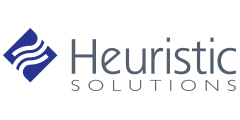What can you do on your end to be sure that you are taking the right steps toward helping your technology partner be effective while maintaining program quality and defensibility?
The answer is simple: document, document, document. If it feels like you are over-documenting, you’re probably doing it right.
The right documentation will achieve the following objectives:
- Explain the basis for change. At some point in the future, someone will ask: “why did they do that?” Don’t make people root through Board meeting minutes to understand why you made the decisions you made.
- Define the change. Establish the parameters of the change: what is the change you need to make, who does it affect, and for how long?
- Track the change. Leave breadcrumbs so you can reverse your decisions or make subsequent decisions based on the same population
We recommend you communicate these changes in the following formula:
- Rationale: “The Board of Directories has decided to ___ to avoid unnecessary hardship / recognize limitations…”
- Duration: “This policy will be in effect until. . .will only apply during. . .”
- Affected Parties: “This policy will affect anyone who is. . . due to recertify / applying for the xxx exam window.”
As your technology partner implements these changes, it is important for them to communicate back to you with clear documentation of exactly how they have altered your toolset. Some things you should be requesting or looking for from them include:
- Affected areas:
- “Based on your request of dd/mm/yyyy, we will modify everyone who meets the requested criteria. The parties affected by this change are represented in the xxx report. Please confirm that this report represents the people you wish to be affected and omits anyone you do not want to be affected.”
- “Based on your request of dd/mm/yyyy, the following variables have changed…”
- Duration of changes:
- “We will monitor the system for xxx days to ensure system triggers do not reverse this change.”
- “We will revert the system to the current configuration on mm/dd/yyyy.”
For tracking, consider using your platform to manage the details:
- For any date that changes, make sure you record an “original date” to use to compare to the date that changes
- Record a “change reason” to differentiate the impetus for various changes
- Enter a “note” on any record affected so that it is viewable by customer service
How can you retrofit these requests?
You may already have made some of the changes, so what do you do if your application dates and credential holder statuses have already been adjusted? What if you have already made the changes and haven’t written them down?
We recommend that you “re-open” your change requests to bolster them with the right explanation and breadcrumbs. It may seem like a chore to do it now, but it is still going to be much easier to do now when it is fresh in your mind than later when everything catches up with you We promise it will pay off in the future!
What changes can you make?
Now that we have proposed an approach to change that will make the process easier, what are some of the changes you might need to make?
Our Heuristics analysts have received many requests from clients looking to make program adjustments as a consequence of the COVID-19 pandemic:
- Waive requirements for in-person activities
- Extend deadlines for individuals to complete required activities
- Process refunds for canceled exam fees or other activities (individually or in bulk)
- Modify payment rules (e.g. waive late fees, offer discounts)
- Send bulk communications to keep your community apprised of developments
Check out this article for some more details on the approaches our LearningBuilder community is taking in response to COVID-19.
In the mean time we hope you are taking care of yourself, staying well (physically and socially – video chat counts!), and taking this time to connect with family and loved ones in your household.
Wishing you all the best!




